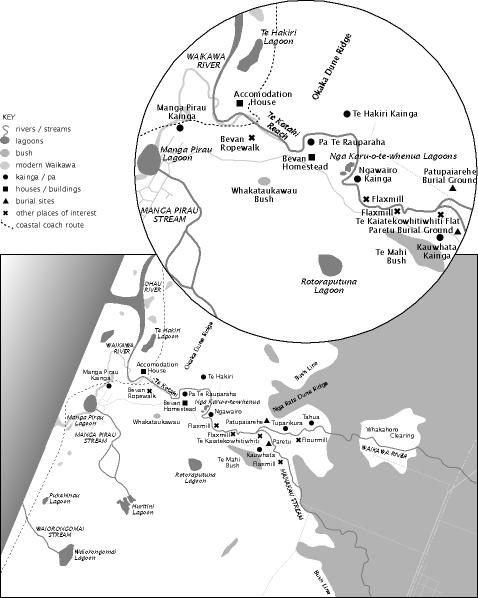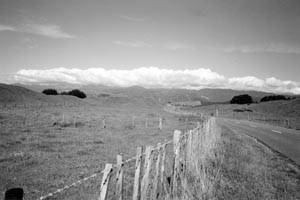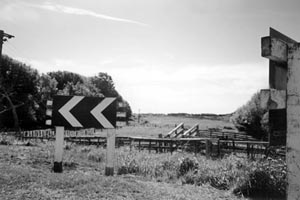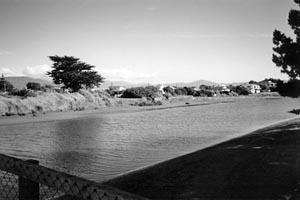

Thomas (1) and George Bevan set up a ropewalk and homestead on the Waikawa River

Site of the Bevan Homestead by the Heritage Trail sign on Waikawa Beach Road.
Pa Te Rauparaha and the ropewalk are further to the left.
Photograph courtesy of Karen Jessop, 1999.

Site of the Bevan Ropewalk by the entrance to Tiro Moana on Waikawa Beach Road.
George Bevan’s Accommodation House was located in the far distance.
Pa Te Rauparaha was further to the right.
Photograph courtesy of Karen Jessop, 1999.
Thomas (1) Bevan 's four younger children walk from Wellington to Waikawa
The Manga Pirau kainga is home to at least 3000 people
Wellington-Wanganui mail service is suspended
Dispute between Thomas (1) Bevan and Tohutohu over a cask of tobacco leading to a visit to Waikawa by Governor Grey
Timber cut for Rangiatea Church and floated down the coast to Otaki
Flour mill established on the Waikawa River
Mail services resume and become weekly
Thomas (1) Bevan leaves Waikawa, his children remain
Regular ferry service across the river
Rangiatea Church built
Te Rauparaha dies
River ferrymen along the coastal overland route instructed to handle letters for settlers in their area
Thomas (2) Bevan takes up farming at Waikawa
Flourmill erected on the Waikawa River
George Bevan takes over the accommodation house on the Waikawa River
Arthur Drake born
A coastal ferry service is operating between Wellington and Waikawa (and elsewhere)
An earthquake destroys the Manga Pirau Lagoon

Site of the Manga Pirau Lagoon at the end of Waikawa Beach Road.
Photograph courtesy of Karen Jessop, 1999.
Foley's Circus visits Waikawa
Thomas (2) Bevan restarts the ropewalk
Cobb and Co coach services begins
Thomas (2) Bevan has a rent dispute with the Ngati Wehiwehi
Manga Pirau Kainga is still inhabited
Coastal ferry service is still in operation
An influenza epidemic drastically reduces the Maori population of the area
Horse racing becomes popular at Waikawa
The Waikawa and Ohau rivers split and return to separate mouths
Thomas (2) Bevan closes the ropewalk and returns to farming
The Bevan family moves from Waikawa to Manakau